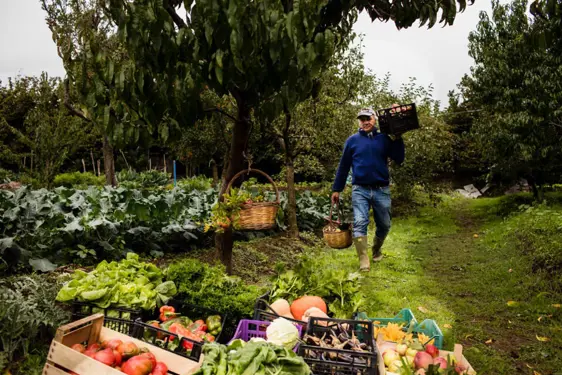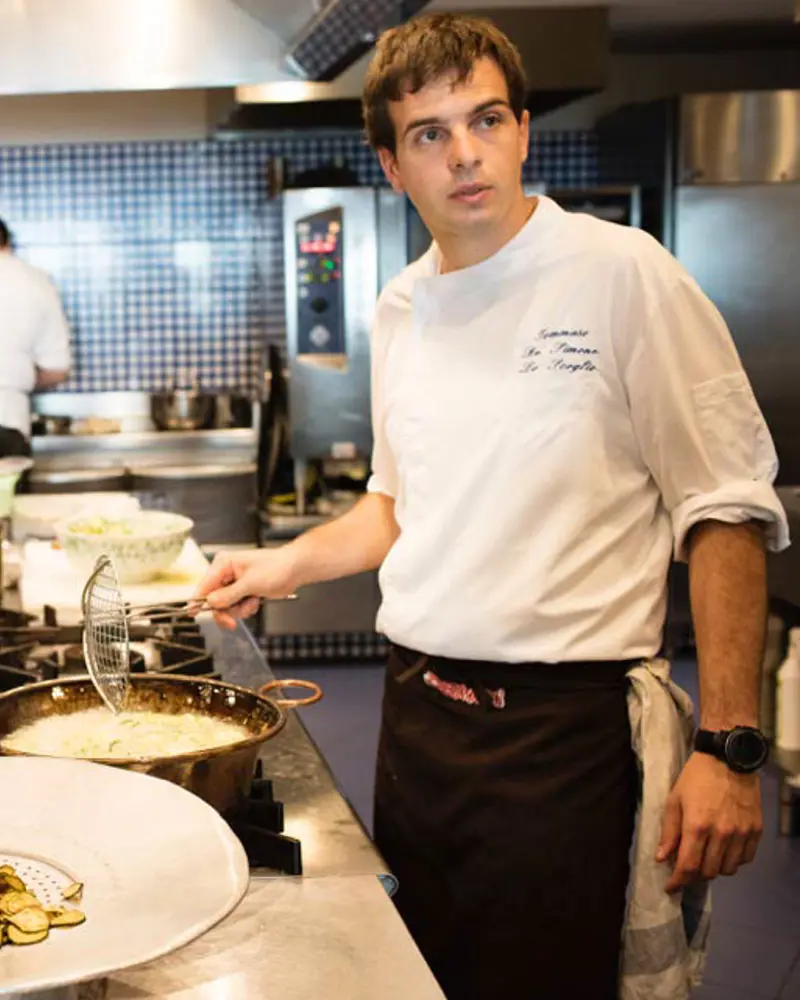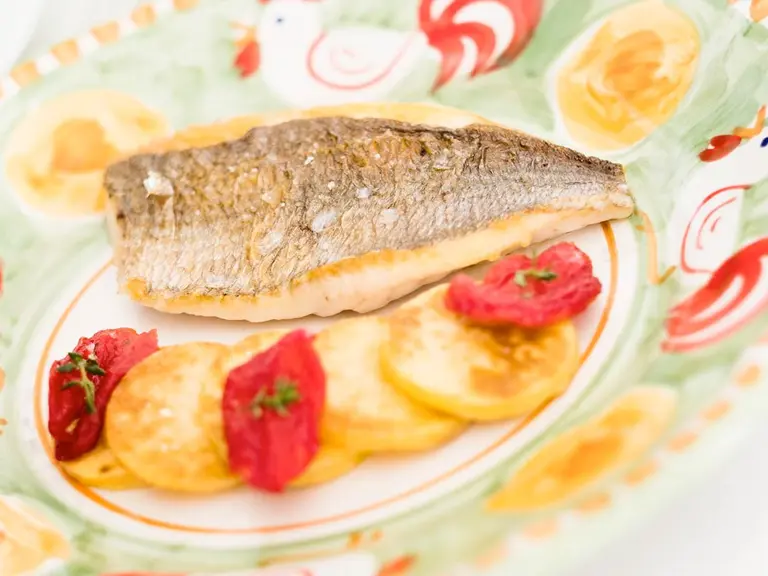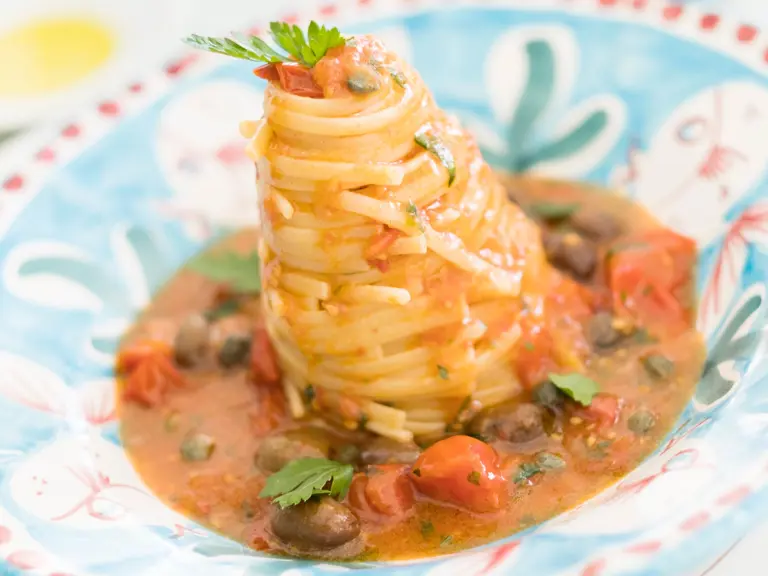LO SCOGLIO: SPAGHETTI, ZUCCHINE & AMORE
30.08.2016 RECIPES
Sadly, nonna Antonietta – ‘Ntunetta’ in local dialect – passed away in May 2016, at the age of 87, but the restaurant she founded in 1958 with her husband Pappone is still going strong, still a bedrock of warm De Simone family hospitality and home cooking that seems impervious to fads and fashions.
Naomi Campbell called Antonietta ‘mamma’; film producer and president of Naples football club Aurelio de Laurentiis has been coming here since he was ten; great Neapolitan poet and playwright Eduardo De Filippo wrote an ironically affectionate ode to Antonietta and Pappone that the couple framed – it hangs on a wall inside the main dining room.
But one of the joys of Lo Scoglio is that there’s no special VIP treatment, no guest hierarchy. Today it’s Pappone and Antonietta’s grandchildren, Tommaso, Antonia and Margherita, who run a restaurant that has expanded from its glorified-fishing-shack origins to become a large covered terrace anchored to the beach below on poles, with a jetty extension jutting over the waves that serves both as al fresco dining space and mooring station for the small motorboat which skipper Peppe uses to ferry guests to and from their yachts. There’s now also a small beach-facing hotel behind the restaurant, with 14 utterly simple rooms, their basic decor deferring – as is only right – to the mesmerising view.
One thing many visitors to the Amalfi Coast underestimate is the extent to which the area’s culinary traditions rely on the land, rather than the sea. Fishing was an activity for the few, and one that could not be relied on when the weather was bad. But just about every family had a smallholding, even if it was just a terraced plot a few metres square, where vegetables and herbs grew beneath the lemon and olive trees. Lo Scoglio reflects this tradition: the seafood, based on whatever the boat brought in, is spectacularly good and fresh (don’t miss the ricci, or sea urchins, which taste like distilled sea air). But it’s the family’s three small organic farm plots – the fiefdom of Peppino, Antonietta’s eldest son – that are the restaurant’s pride and joy, and provide it with the ingredients for some of its most celebrated dishes.

View
“My grandfather and grandmother were simple contadini (small farmers)”, says 27-year-old Tommaso, who presides over the kitchen. “They opened this place so people could enjoy the things they grew, and the things they fished. Each morning, it’s the produce that my father brings down from our farms or the fishermen’s catch that dictates the menu. Most of what you eat here is home-grown or locally-fished. In the winter, we even make our own hams”.
Tommaso is happy to give the Sirenuse Journal the recipe for Lo Scoglio’s most celebrated dish, Spaghetti con le zucchine alla Nerano (‘Nerano-style spaghetti with courgettes’) and even to let us watch and take photos and notes while he prepares it in front of us. So forget all the legends that surround the dish, the talk about secret ingredients and closely-guarded family secrets. This, believe us, is how it’s done.
Nerano-style spaghetti with courgettes
Serves 4
- 400g spaghetti (Tommaso uses Del Verde pasta from Abruzzo)
- 1kg small to medium courgettes
- A large bunch of fresh basil, leaves removed from stalks
- 100g parmesan (Parmigiano Reggiano), grated
- Olive oil
- Salt and pepper to taste

Yes, that’s right, a kilo of courgettes for four people – Tommaso estimates that you need around six of them per person. It’s not called spaghetti con le zucchine for nothing.
First, put the water for the pasta on to boil in a large pot: remember, use lots of water – a litre per 100g of pasta is a good rule. Salt to taste.
Next, cut the courgettes in rounds, finely – they should be no more than 2mm thick. Pour olive oil (and for this recipe it must be olive oil, not sunflower or other seed or nut oils) into a wide copper pan until it comes 2cm up the sides, and heat it on a medium to high heat – what Tommaso calls ‘un fuoco vivace’. Don’t have the flame or hob so high that the oil starts smoking, but do make sure it’s nice and hot before you put the courgettes in (otherwise they will go soggy – you want them to fry in the oil, not to absorb it). Stir with a slotted spoon for a few minutes, and transfer them onto absorbent kitchen paper to drain as soon as they are golden brown. When it has cooled down a little, take a ladle-ful of the oil you fried the courgettes in, and set it aside.
At this point put the spaghetti into the boiling pasta water and prepare another pan nearby. After around two minutes, take four ladle-fuls of the cooking water and add them to the pan, which should be set on a medium heat. Put the courgettes in this, stirring carefully with a wooden spoon (you don’t want the courgettes to reduce to a mush). Add the basil, and salt and pepper to taste. Stir to amalgamate the sauce and the pasta, and cook for no more than two minutes before turning off the heat. Let the courgettes rest a little (by this time they will have partly dissolved into a sauce – but some should still be intact).
After a couple of minutes or so, turn on the heat again and stir for another minute or so. Then turn off once more.
Drain the spaghetti when it is still fairly al dente (depending on the brand you use, this will probably be between 6 and 9 minutes), keeping aside one more ladle-ful of cooking water to be on the safe side, and add the drained spaghetti to the pan in which the courgettes are cooking. Turn the heat up up high and stir to coat the pasta in the zucchine sauce, adding some of the oil you kept aside at the same time. If it looks too dry, add some more acqua di cottura (cooking water). Right at the end, add the grated parmesan. Serve up the spaghetti with a fork, twisted into a loose pyramid on each plate. Garnish with fresh basil.
Le Sirenuse Newsletter
Stay up to date
Sign up to our newsletter for regular updates on Amalfi Coast stories, events, recipes and glorious sunsets




